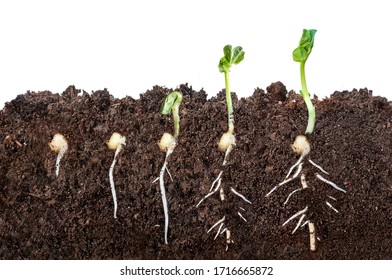
Method of breaking seed dormancy
There are basic 3 methods of breaking seed dormancy, which is briefly described as follows-
- Methods to overcome physiological dormancy
- Methods of removing inhibitory substances
- Methods for removing hard seededness
1. Methods to overcome physiological dormancy
- Dry storage: For species where dormancy is naturally of short duration, it is often sufficient to store the sample in a dry place for a short period.
- Pre-chilling: The replicates for germination are placed in contact with the moist substratum and kept at a low temperature for an initial period before they are removed to the temperature. Agricultural and vegetable seeds are kept at a temperature between 5°C and 10°C for an initial period of up to seven days. In some cases, it may be necessary to extend the pre-chilling period or to re-chill. Therefore, the pre-chilling period is not included in the germination test period. Still, both the duration and the temperature should be reported on the Analysis Certificate.
- Preheating: The replicates for germination should be heated at a temperature not exceeding 40°C, with free air circulation, for a period of up to seven days before they are placed under the prescribed germination conditions. In some cases, it may be necessary to extend the preheat period. Both the duration and the temperature should be reported on the Analysis Certificate.
- Light: The test should be illuminated for at least 8 hours in every 24 hours cycle and during the high-temperature period when the seeds are germinated at alternating temperatures. The light intensity should be approximately 750-1250 lux from cool white lamps. Illumination is recommended especially for certain tropical and subtropical grasses, for example, Chloris gayana, Cynodon dactylon.
- Potassium nitrate (KNO3): The germination substratum may be moistened with a 0.2 percent solution of KNO3, prepared by dissolving 2 gm KNO3in one litre of water. The substratum is saturated at the beginning of the test. Still, water is used for moistening it after that. The use of this treatment should be noted on the Analysis Certificate.
- Gibberellic Acid (GA3): The GA3 method is recommended for Avena sativa, Hordeum vulgare, Secale cereale, and Triticum aestivum. The germination substratum may be moistened with a 500 ppm solution of GA3, prepared by dissolving 500 mg GA3 in one litre of water. When the dormancy is weaker, 200 ppm may be enough. When it is stronger, up to 1000 ppm solution may be used.
- Sealed polythene envelops: Where a high proportion of fresh ungerminated seeds are found at the end of the standard test (for example, Trifolium spp), retesting in a sealed polythene envelope of just sufficient size to hold the test satisfactorily will usually induce these seeds to germinate.
2. Methods of removing inhibitory substances
- Pre-washing: When germination is affected by a naturally occurring substance in the seeds, which acts as an inhibitor, it may be removed by washing the seeds in running water at room temperature (25°C) before the germination test is made. After washing, the seeds should be dried back at room temperature (25°C) (for example, Beta vulgaris). Both the duration of the treatment and the water temperature should be reported on the Analysis Certificate.
- Removal of structures around the seed: Germination of certain spp. is promoted by removing outer structures such as involucre of bristles or lemma and palea of certain gramineae.
- Disinfection of the seed: (For samples of Beta vulgaris only) A fungicide treatment may be applied before planting the seed for germination when the seed lot is known not to have received such treatment.
3. Methods for removing hard seededness
For many spp. where hard seed occurs, no attempt is made to germinate and the percentage found is reported. Where a fuller assessment is required, some special treatment is essential. This treatment may be applied before the commencement of the germination test. Suppose it is suspected that the treatment may adversely affect non-hard seeds. In that case, it should be carried out on the hard seeds remaining after the prescribed test period.
- Soaking: Seeds with hard seed coats may germinate more readily after soaking for 24-48 hours in water. Therefore, the germination test is commenced immediately after soaking.
- Mechanical scarification: Careful piercing, chipping, filing, or sandpapering of the seed coat may be sufficient to break the dormancy condition. Care must be taken to scarify the seed coat at a suitable part to avoid damaging the embryo and the resulting seedling. The best site for mechanical scarification is that part of the seed coat immediately above the tips of the cotyledons.
- Acid scarification: Digestion in concentrated H2SO4 is effective with some spp of Brachiaria. The seeds are soaked in the acid until the seed coat becomes pitted. Digestion may be rapid or take more than one hour, but the seeds should be examined every few minutes. After digestion, seeds must be thoroughly washed in running water before the germination test is commenced. In the case of Oryza sativa, scarification may be performed by soaking the seeds in 1N HNO3 for 24 hours (after preheating at 50°C).